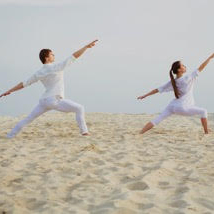 As humans, we share certain ways of moving that distinguish us from other species. If we are fortunate, we develop into walkers within the first year and perhaps a few months of life. From there, we continue to expand and refine our movement skills and hopefully retain good ones through our later years. We move through our lives with comfort and ease.
As humans, we share certain ways of moving that distinguish us from other species. If we are fortunate, we develop into walkers within the first year and perhaps a few months of life. From there, we continue to expand and refine our movement skills and hopefully retain good ones through our later years. We move through our lives with comfort and ease.
As we all know this is not always the case. So what is it that gets in the way?
Of course this question has many answers, the details of which are unique to your situation. That said as a “big picture” thinker, I can distill the answer into two broad categories.
First, there is movement that is currently not doable. Here we find movement that has yet to be learned as in the case of children with motor-related special needs or, alternatively, a performing artist or athlete where that next step seems impossible. A variation on this theme is movement that needs to be relearned—usually as the result of a stroke or other neurologic condition.
Second, we have movement that is doable, but is either difficult or painful. In the over 30 years that I have been in the movement business, I have found that when movement is difficult or painful, less than optimal movement or postural habits are often the root cause of these difficulties. Sometimes folks are aware that something isn’t right and at other times these habits are completely unconscious. Critical to long-term resolution is shining a light on these habits and patterns and developing more efficient and effective ones. Often these relate to a sense that you have to work hard to move well or have good posture.
Something else that I know is that comfortable, efficient and effective movement has certain characteristics. One is that when more of the body is involved in a movement there is less strain on any one muscle or joint. The more of yourself that you involve in the movement, the easier it feels. There are a few others that also look at the body from a somewhat mechanical standpoint.
Beyond that I know that to truly improve how you move you need to become aware of the feeling of the movement—from the inside. The ability to do this allows you to learn new movement and independently make changes you need to move comfortably and effectively. This is in sharp contrast to the attempts to copy some ideal or exercise some specific body part that appears to have a role in the problem.
What I know from my years of helping people from babies and children with special needs to adult Special Olympians, from young athletes and dancers to members of Pacific Northwest Ballet and Seattle Symphony, and many many folks who have pain and injuries is this.
If I couple my knowledge of optimal movement with my keen observation skills, gentle hands on work, simple comfortable movement and conversation as appropriate I can help you and your family members. As Moshe Feldenkrais famously said,
“Make the impossible possible, the possible easy, and the easy elegant”
If you would like to get more information or schedule a consultation please call 206-842-4608.
